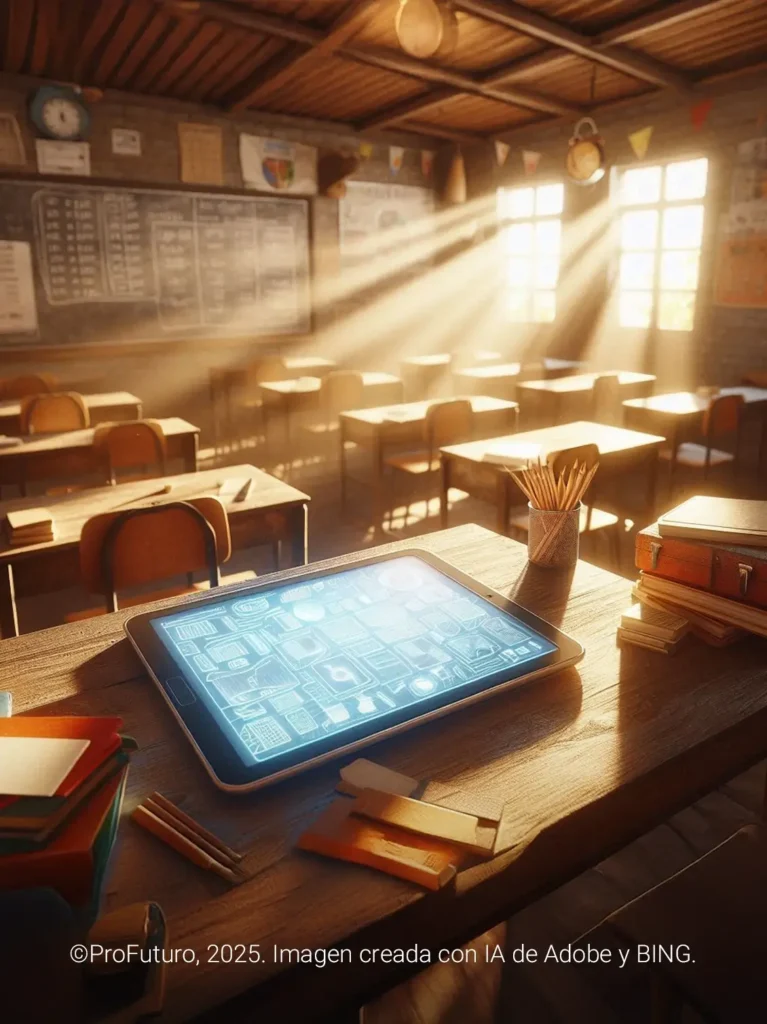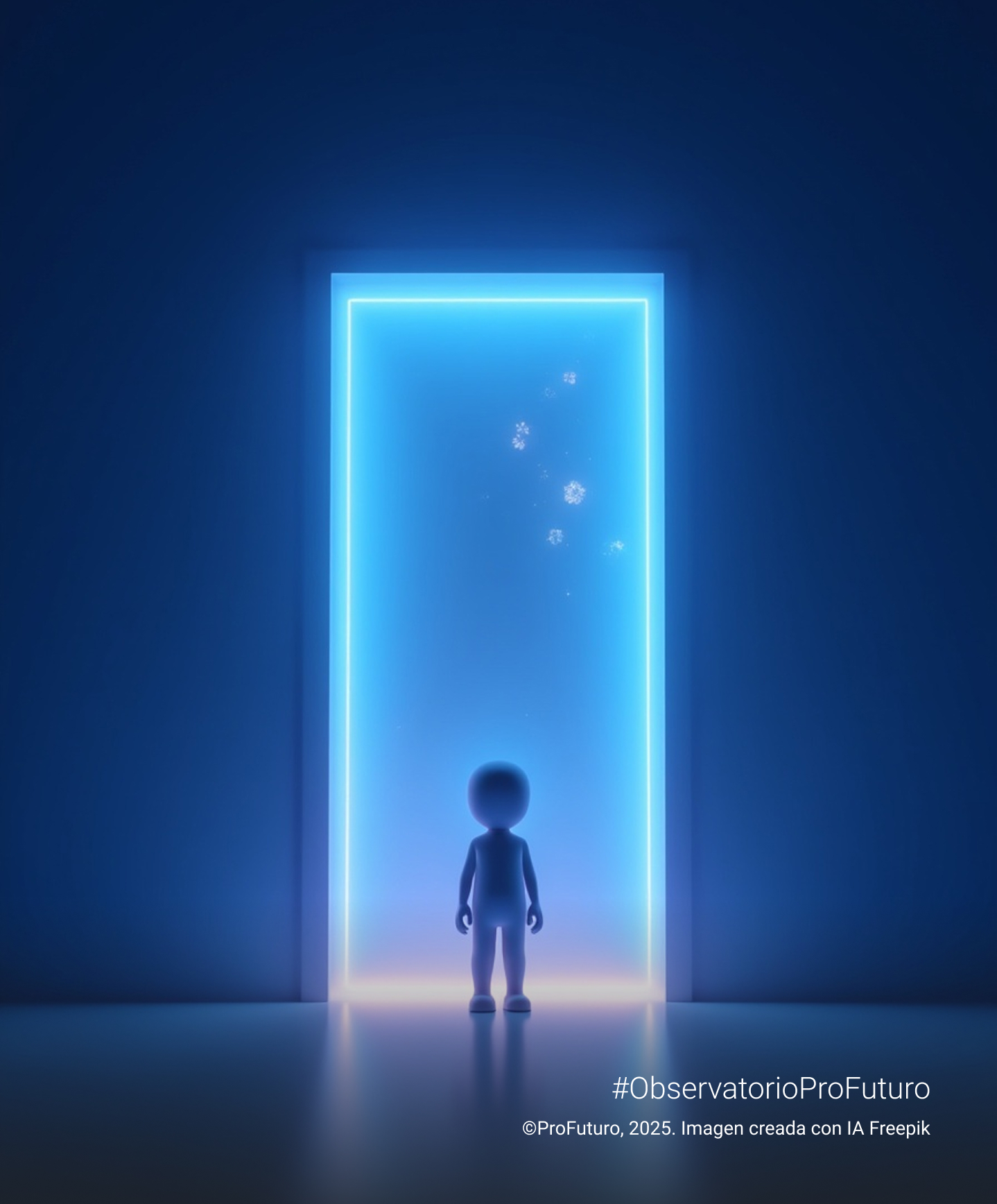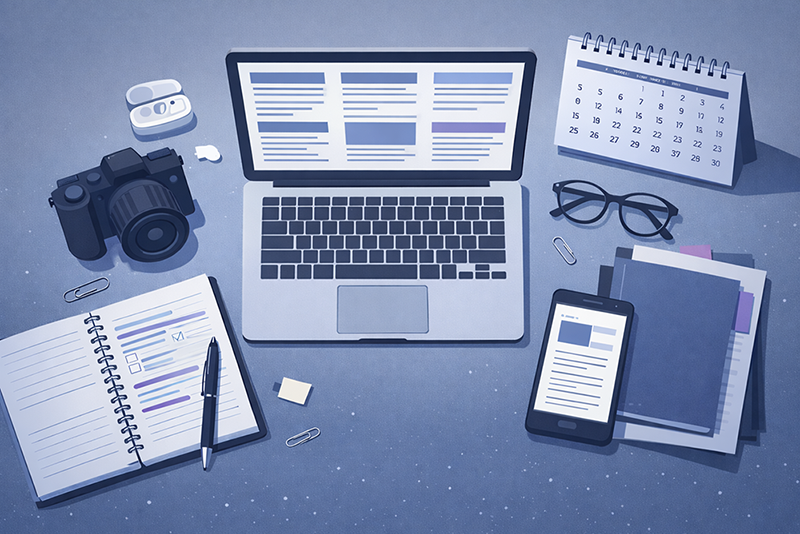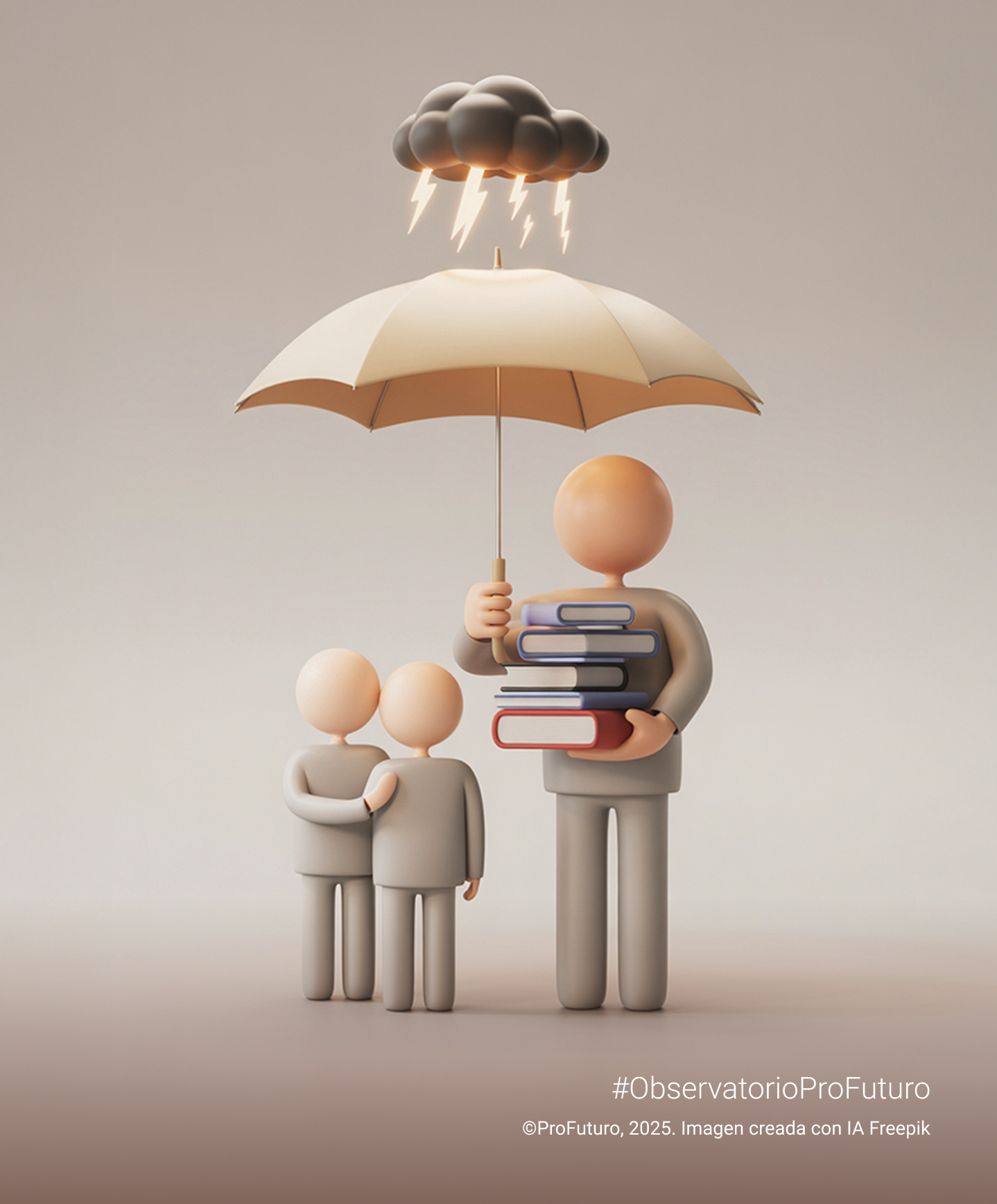
Can you teach using technology without collapsing? This question, which may seem far-fetched to many, is sure to send shivers down the spine of many teachers. Teacher’s rooms in the 21st century are full of technology-related horror stories: platforms crashing just before an exam, passwords impossible to remember or apps that promise to save education and end up in the drawer of oblivion.
And yet, not everything is a disaster. You can teach with technology without losing your composure. And you don’t even need to be a guru or a computer engineer. We need something simpler: to understand that digital tools are not an end in itself, but a means. Tools that, if used well, can open many doors, connect better with students and give meaning to a profession that has always had more to do with vocation and ingenuity than with WiFi and devices.
It is important, however, not to get carried away by the trend for constant novelty. We don’t need ten platforms, or twenty applications, or a hundred tutorials. We need good judgement to distinguish what works from what doesn’t; and also the serenity to accept that not everything will work out right the first
time.
That is what this article is about: how to transform technology into an ally, how to stop seeing it as an insurmountable obstacle and start using it as a pedagogical resource at the service of what really matters: teaching and learning.
The myth of the perfect digital teacher Legend has it that somewhere in the cosmos there exists (although no one has seen it): the perfect digital teacher. One who masters all the secrets of technology and navigates between applications with grace and ease. The one that turns every class into a festival of digital resources, with interactive whiteboards, online quizzes and discussions in virtual forums.
The myth of the perfect digital teacher
Legend has it that somewhere in the cosmos there exists (although no one has seen it): the perfect digital teacher. One who masters all the secrets of technology and navigates between applications with grace and ease. The one that turns every class into a festival of digital resources, with interactive whiteboards, online quizzes and discussions in virtual forums.
The problem is that this character does not exist. Or, if it exists, it is a rarity that becomes a burden rather than an inspiration. Because most teachers face another reality: an overwhelming myriad of platforms, apps and tutorials that no one has time to watch. Digital tools are often perceived as a never-ending race in which you are always one step behind.
Training does not help much either. Either it never arrives, or it arrives badly, or it is so vague that it’s more confusing than clarifying. Many end up learning in fits and starts, through trial and error. And in the meantime, the demand is still there: you have to be modern, you have to be innovative, you have to be in everything.
The key message, however, is different. No one needs to be that perfect digital teacher. This is not about mastering everything, knowing all the applications or keeping up with the latest technological fad. It’s about choosing wisely, starting small, trying what can really improve the classroom and leaving aside what only makes it harder. Digital tools are just that, another tool. And like any tool, their value lies in knowing how to use it well.
Skills that matter
A good teacher is not measured by the number of applications he or she handles, but by the strength of his or her craft. You can have the latest educational platform and a classroom full of devices, but if you don’t know how to explain, if you don’t know how to communicate, if you don’t understand how your students learn, technology is useless.
Or in the words of Mary Burns, who has been researching teacher education for two decades: “Teachers with solid pedagogical knowledge not only master the subject matter, but also understand the best ways to convey it, adapting to different learning styles.” In other words, you have to be a good teacher first. Digital tools come later.
So the skills that really matter are quite ancient. Knowing how to plan a lesson that makes sense, designing assessments that are not reduced to a race to memorise, communicating clearly and listening to students. And, above all, having high expectations of their students. If that foundation fails, no digital
application can do anything. If the foundations are there, then yes: technology can enhance them.
Of course, in addition to these foundational skills, complementary skills are needed nowadays. Not because they are fashionable, but because the context demands it. Teaching students to use technology judiciously. Knowing how to choose which digital tool is useful and which is just a waste of time. Integrate digital tools because of their actual contributions, not have some filler. And, very importantly, transmit basic principles of digital ethics: privacy, security and respect.
The balance lies in not letting the digital tools overshadow the pedagogical activity. A strong teacher is not the one with the most platforms and applications, but the one who has the ability to make his or her students learn something valuable. And therein lies the point: digital tools should be a support, never a substitute for those skills that have always made the difference between a good teacher and a mediocre one, even if technology is a great ally in making learning experiences fun, engaging and even memorable.
Digital tools do not free us from being teachers, they force us to be even more so. Because a screen alone does not make a difference, but a teacher who knows how to use it well can make a big difference.
Real obstacles (and how to overcome them)
As any non-Finnish teacher will attest, integrating technology into the classroom is not a bed of roses. Obstacles appear on a daily basis and they are not small. These are barriers that may cause many to prefer to stick with the old reliable chalk.
Mary Burns proposes a simple framework: there are universal barriers, which recur in any context, and barriers that depend on where you teach. Universal barriers are easily recognisable by any teacher in the world.
You don’t have enough devices? You are not alone. In many classrooms computers are nowhere to be found, worse still, they may be there but out of order. Some teachers become jugglers, sharing the same device among several students or using mobile phones as an improvised lifeline.
Is there no institutional support? Welcome to the club. Bureaucracy often call for technological innovation, but rarely provides the conditions for it. There is no time in the timetable, no serious training, no continuity in the programmes. It all depends on the personal enthusiasm and extra effort of the teacher. And we know: enthusiasm runs out.
Do you feel you lack digital skills? It’s not surprising. The university prepared many to teach, but hardly taught how to truly integrate technology. As Burns points out, “teachers come to schools with little modelling of innovative technologies”. And of course, when they face their students, they are expected
to be the experts. A contradiction that generates frustration.
These problems are compounded by differences in context. In some countries, the obstacle is still the basics: electricity, a stable connection, a poorly equipped classroom… In others, the problem is that the devices exist, but there is no plan, no renovation, no sense of continuity. And in more “privileged” environments, the difficulty is different: an excess of platforms that confuse more than they help, programmes that change with every educational trend or systems that demand quick results without supporting teachers in the process.
However, these challenges can be managed with creativity and practicality. The first step is recognising that these exist and not blaming oneself for not being “the perfect digital teacher”. Then, choosing wisely where to invest your energy: trying what’s available, relying on colleagues and learning to fail without dramatising.
We cannot remove obstacles, but we can prevent them from paralysing us. And it is also our responsibility to gain the autonomy to grow professionally: there is a huge offer of courses and training nowadays, but not all of them are equally valuable. It is important to choose those that are really useful in the classroom, those that come from the practical experiences of other teachers who have already gone through the same problems. Part of the key lies in this shared learning: not inventing everything from scratch, but building on what has already proven to work.
Five practical keys to getting started
After reviewing skills and obstacles, it’s time for the most important part: what to
do so as not to give up before you start. Theory is fine, diagnostics are fine, but
the classroom is waiting. Here are five simple keys, a survival handbook, to take
the plunge into the digital world without losing your head.
- Start small
Forget about wanting to change everything in one week. There is no need to turn every classroom into a Silicon Valley lab. Choose a tool, an activity, something manageable. As Mary Burns says, it’s about trying something small, seeing if it works, and then gradually adding more. The trap is in wanting to run too much. The result is often chaos and frustration. - Seeking allies
The myth of the hero teacher who solves everything is not only false, it is also exhausting. There will always be a colleague with more technological patience or experience in the tool you are interested in. Reach out, ask for help, try it out as a team. Burns sums it up: “Find a partner and experiment together.” Shared learning weighs less. - Have a plan B
Technology is unpredictable. Today it works, tomorrow it crashes. And it almost always crashes at the worst possible moment. The sensible thing to do is to accept that fickle nature and be prepared. If the projector dies, you need to have an alternative resource at hand. - Trust your students
Many teachers underestimate their students. They think they won’t be able to, that they will get lost, that they only know how to watch TikTok. And yet, when given responsibility and trust, they surprise you. Students respond better when they feel that their teacher believes in them. In the end, learning with technology is not just about buttons, it is also about expectations. - Have fun and make the most of your mistakes
It may sound naïve, but it is true. If the experiment with Kahoot is not perfect, it’s no big deal. Nobody is going to die from it. When using technology in education one has to leave room for play, curiosity and humour. If the teacher enjoys it, the pupils notice it. And part of that fun is in learning from the mistake: stopping with the students to analyse what happened, why it failed, what we could do differently and how to put together a new plan to try again. It’s not just about laughing at the stumble, it’s about turning it into a shared learning opportunity, where everyone participates in the process of improving.
Adding new possibilities
It can be tempting to think that technology will solve school problems. It won’t. It won’t solve the student’s lack of motivation, nor the teacher’s precarious conditions, nor the lack of time to prepare a decent class. Technology can help, yes, but it does not replace what is essential: the relationship between the teacher and the student.
That, perhaps, is the real value of this whole affair. Digital tools do not free us from being teachers, they force us to be even more so. Because a screen alone does not make a difference, but a teacher who knows how to use it well can make a big difference. And that difference is not made by the device, it comes from the teacher’s judgement. Because, in the end, teaching has always been a craft of ingenuity and perseverance. And digital tools don’t change that, they just add new possibilities.






